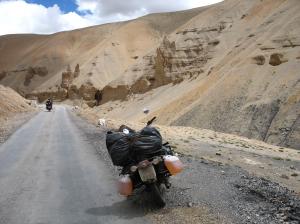Lake District National Park
Written on 3:09 AM by Reethi

Hadrian's Wall: Visit the “World Heritage Sight” while you’re at Lake District. Testimony to one of the greatest monuments dedicated to power, Hadrian’s Wall was built almost 2000 years ago by Roman Emperor Hadrianus. The wall stretches from the River Tyne in the east to Solway Firth in the west, spanning 73 miles. Hadrianus built this wall to mark his empire, its northern boundary and also to “separate Barbarians from Romans”. Wildly evocative, you can catch a glimpse of the remnants of the wall and visit Housesteads Fort as well.
Lakeside & Haverthwaite Railway: Don’t miss the chance of a lifetime to travel through time on the Lakeside & Haverthwaite Railway. To the delight of railway preservation enthusiasts, this 3.5 mile stretch of the line was re-started for passengers in May 1973 after much persuasion with the British Rail Property Board. Initially this Furness Railway line ferried passengers and freight from Lakeside to Ulverston and Barrow-in-Furness. However it was closed down in 1967. Today, the services runs from April till October end and takes 15 minutes to reach Lakeside from Haverthwaite. It is a bustling terminus with locomotives being serviced. You will sight diesel and steam engines, steamrollers and old army vehicles as well. You can even take the pleasure boat rides from Lakeside to Waterhead (Ambleside) and Bowness because the timings are linked to arrival of the train. While buying you train ticket, you can buy the cruise ticket as well.
Lake Windermere: Lake Windermere is the most popular lake in the district and attracts hoardes of tourists in summer. A typical tourist town, Windermere is a busy town and just like the lake by its name, the town is popular destination as well. Few tourists prefer Keswick for its ambience.
Furness Abbey: What remains of the Furness Abbey is the soaring red sand stone ruins from the 700 years old Cistercian church and monastery. Located in a peaceful valley, close to Barrow-in-Furness, the Abbey is close to the coast. An off-beat abbey on the southwest of Lake district, you might find yourself exploring the ruins all by yourself!
Coniston - John Ruskin's House: Noted Victorian John Ruskin’s home overlooks the lake to Coniston village and the peak the Old Man of Coniston. He lived here from 1872 till his death in 1900. It is open for public everyday in mid-March to mid-November between 11 am and 5-30 pm and every day mid November to mid-March from 11 am to 4-30 pm, Wednesday to Sunday. It remains closed on 25th and 26th December. Located on Brantwood on the eastern shore of Coniston Water, his home is replete with his paintings and drawings. You can dwell in the huge gardens which offer floral delights. Ruskin is buried at St. Andrew’s Church in Coniston cillage following his family’s refusal to offer him a grae at Westminster Abbey. Ruskin wrote in 1878 "I raise my eyes to these Coniston Fells (hills), and see them, at this moment imaged in their lake, in quietly reversed and perfect similitude, the sky cloudless above them, cloudless beneath, and two level lines of blue vapour drawn across their sunlighted and russet moorlands, like an azure fesse."
Wast Water: The most awe-inspiring of all lakes, Wast Water, England’s deepest lake looks great on a clear, sunny day. Also England’s deepest lake at 258 feet, this 3 mile long and ½ mile wide lake is surrounded by Lingmell, Kirkfell and Great Gable. An absolute delight for walkers or climbers! However if the weather doesn’t favor Wast Water, you cannot catch the picturesque sights here. Not-to-be missed is the 1500 feet deep vertical scree wall on Wast Water’s south shore, which is crumbling, yet draws your eyes! You can also take the panoramic road from the north shore of this lake, Nether Wasdale in the west to Wasdale head in the east.
![]()







